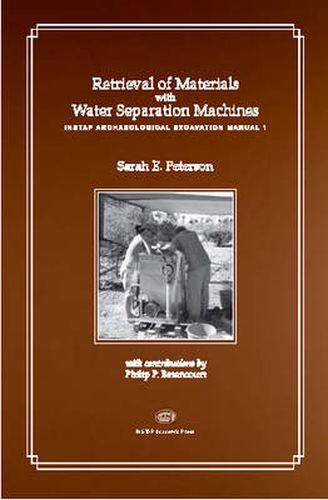Readings Newsletter
Become a Readings Member to make your shopping experience even easier.
Sign in or sign up for free!
You’re not far away from qualifying for FREE standard shipping within Australia
You’ve qualified for FREE standard shipping within Australia
The cart is loading…






From the introduction: A water separation, or flotation, machine is an instrument that divides soil into three components: the material that floats (called flot or light fraction), the stones and other heavy portions that do not float (called residue or heavy fraction), and the particles that either dissolve in water or become suspended in it and are washed away. The primary purpose for utilizing such a device is the recovery of organic remains, such as charred seeds, charcoal, or small bones, which would otherwise be permanently lost. However, the machine is of great value for archaeological excavation because it allows for the collection of tiny artifacts of all classes, it divides them by size and weight, and it does not break fragile items. Water separation is very different from water screening. Use of a water separation machine requires four stages in the recovery of archaeological material: 1. Retrieval of archaeological sediments 2. Operation of the water separation machine 3. Sorting of the materials 4. Study of the materials Contents: List of figures; Introduction; Goals for Using Water Separation Machines; History of Water Separation Machines; General Components of a Water Separation Machine; Retrieval of Soil; Sorting and Study of Remains; Contamination; Case Studies; Bibliography.
$9.00 standard shipping within Australia
FREE standard shipping within Australia for orders over $100.00
Express & International shipping calculated at checkout
From the introduction: A water separation, or flotation, machine is an instrument that divides soil into three components: the material that floats (called flot or light fraction), the stones and other heavy portions that do not float (called residue or heavy fraction), and the particles that either dissolve in water or become suspended in it and are washed away. The primary purpose for utilizing such a device is the recovery of organic remains, such as charred seeds, charcoal, or small bones, which would otherwise be permanently lost. However, the machine is of great value for archaeological excavation because it allows for the collection of tiny artifacts of all classes, it divides them by size and weight, and it does not break fragile items. Water separation is very different from water screening. Use of a water separation machine requires four stages in the recovery of archaeological material: 1. Retrieval of archaeological sediments 2. Operation of the water separation machine 3. Sorting of the materials 4. Study of the materials Contents: List of figures; Introduction; Goals for Using Water Separation Machines; History of Water Separation Machines; General Components of a Water Separation Machine; Retrieval of Soil; Sorting and Study of Remains; Contamination; Case Studies; Bibliography.